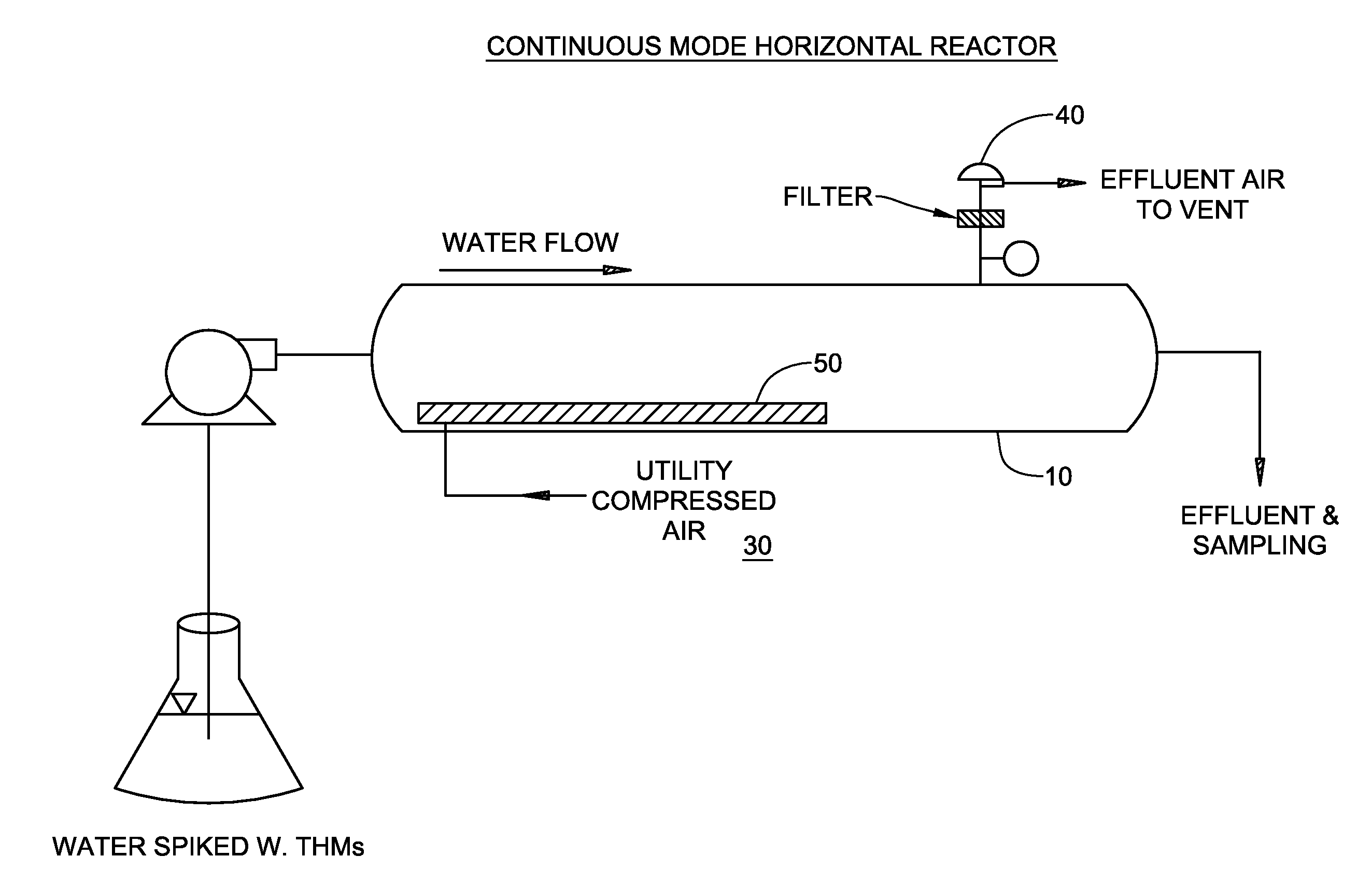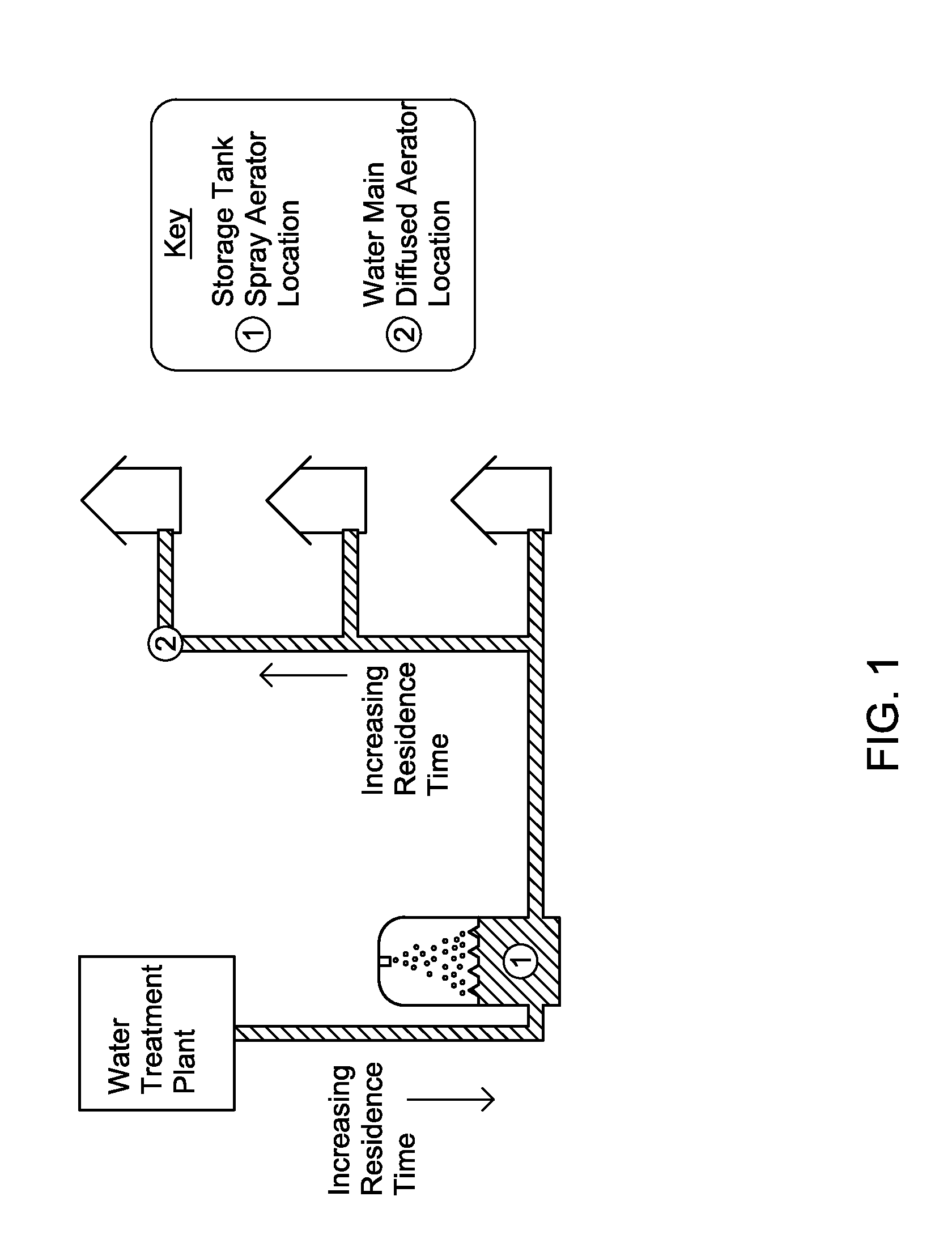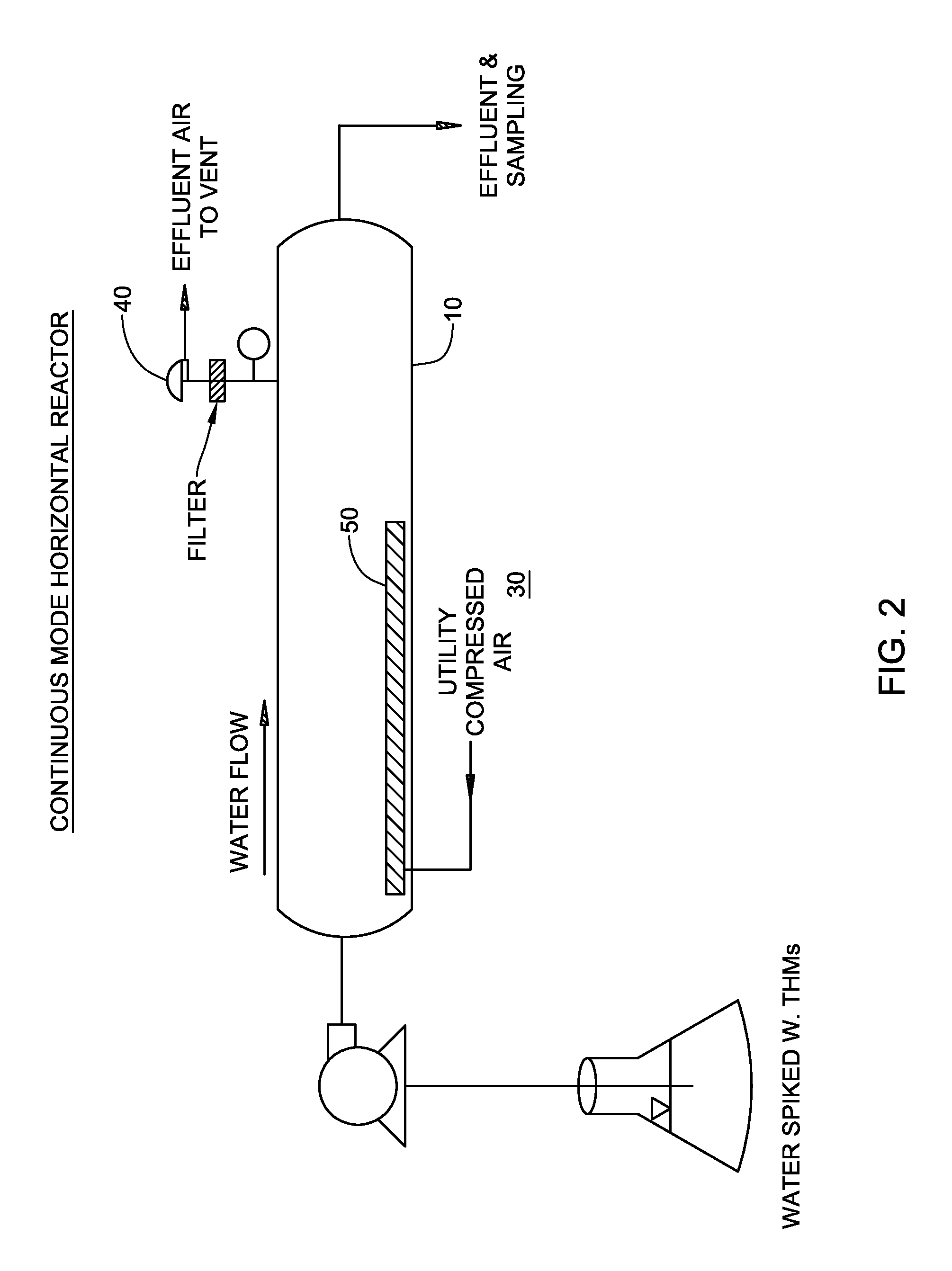System and method for the reduction of volatile organic compound concentration in water using pressurized diffused aeration
a technology of volatile organic compounds and pressurized diffusion aeration, which is applied in the direction of biological water/sewage treatment, water/sewage treatment by degassing, separation processes, etc., can solve the problems of large number of molecules to evaporate or sublimate, liver, kidney or central nervous system problems, and achieve the effect of removing the most efficiently
- Summary
- Abstract
- Description
- Claims
- Application Information
AI Technical Summary
Benefits of technology
Problems solved by technology
Method used
Image
Examples
Embodiment Construction
[0055]Existing methods of addressing the new MCL requirements are costly and may require large capital investment. Since NOM+disinfectant+time=DBPs, there are essentially four ways to reduce THM concentration. First, water distribution system operators could reduce the NOM levels in the water. Second, water supply and treatment operators could switch disinfectants to less reactive forms, or to entirely new systems of disinfection. Third, the water age in the distribution network can be reduced. Fourth, the DBPs can be reduced / removed after their formation.
[0056]It is recognized that from an economic and an operational standpoint, the removal of THMs from a distribution system after formation would be best for some water treatment systems. The system and method of the present invention uses an in-line aeration device to reduce THM concentrations at any point in the length of a distribution system. This approach does not require water treatment facilities to make any changes to their ...
PUM
| Property | Measurement | Unit |
|---|---|---|
| Fraction | aaaaa | aaaaa |
| Fraction | aaaaa | aaaaa |
| Pressure | aaaaa | aaaaa |
Abstract
Description
Claims
Application Information
 Login to View More
Login to View More - R&D
- Intellectual Property
- Life Sciences
- Materials
- Tech Scout
- Unparalleled Data Quality
- Higher Quality Content
- 60% Fewer Hallucinations
Browse by: Latest US Patents, China's latest patents, Technical Efficacy Thesaurus, Application Domain, Technology Topic, Popular Technical Reports.
© 2025 PatSnap. All rights reserved.Legal|Privacy policy|Modern Slavery Act Transparency Statement|Sitemap|About US| Contact US: help@patsnap.com



